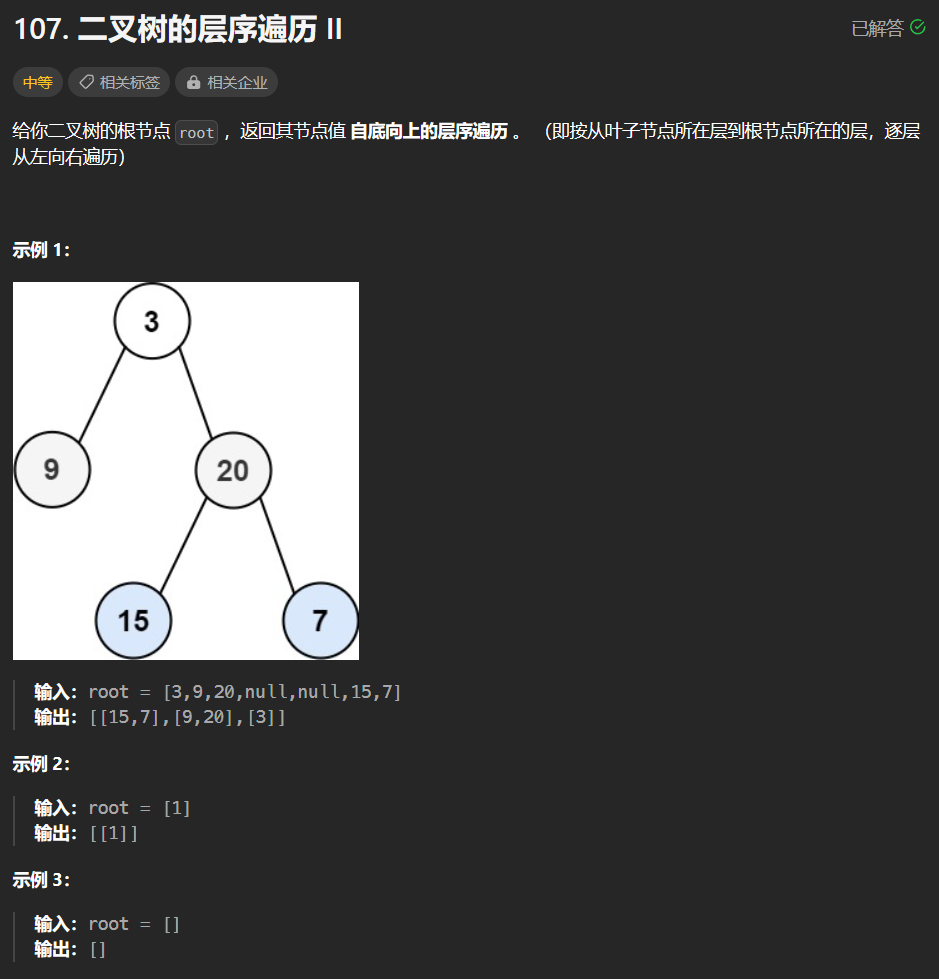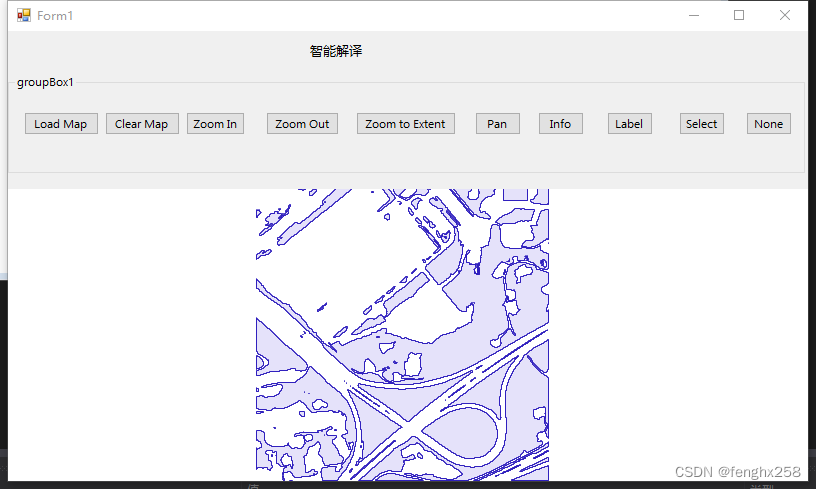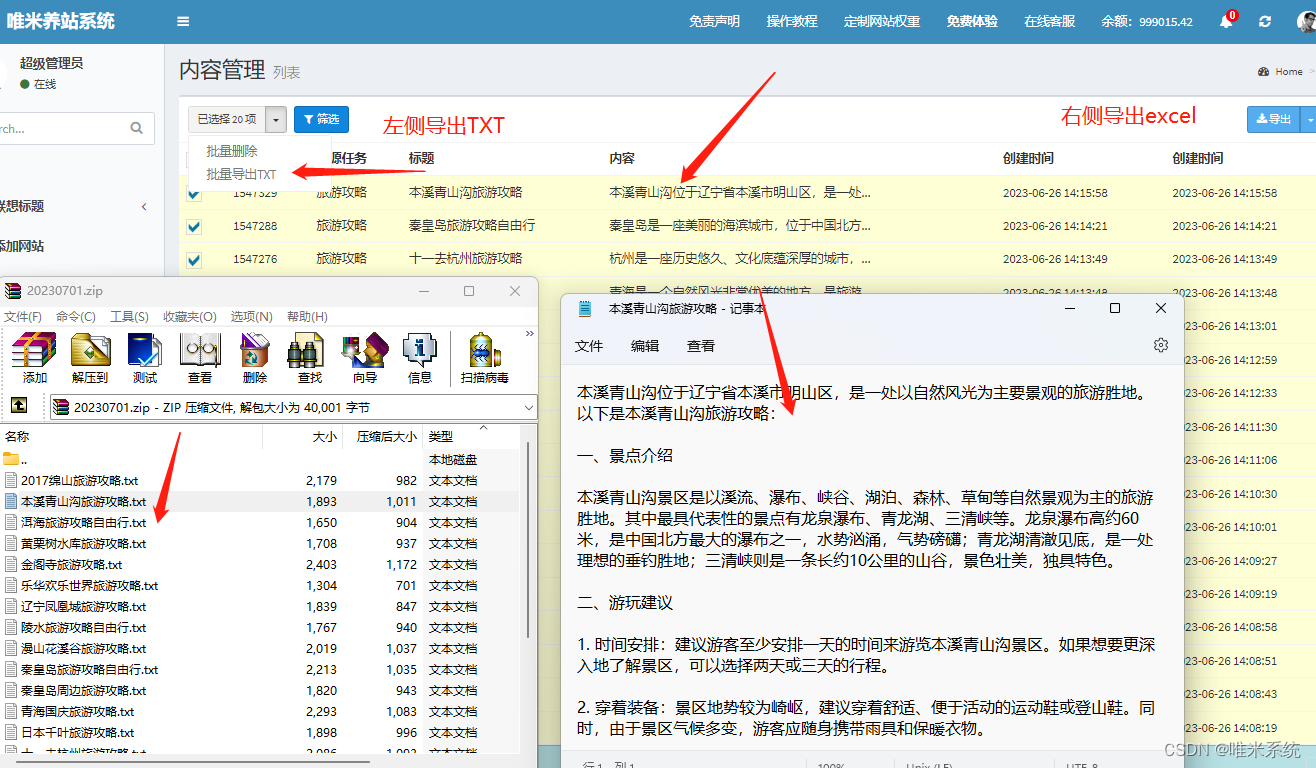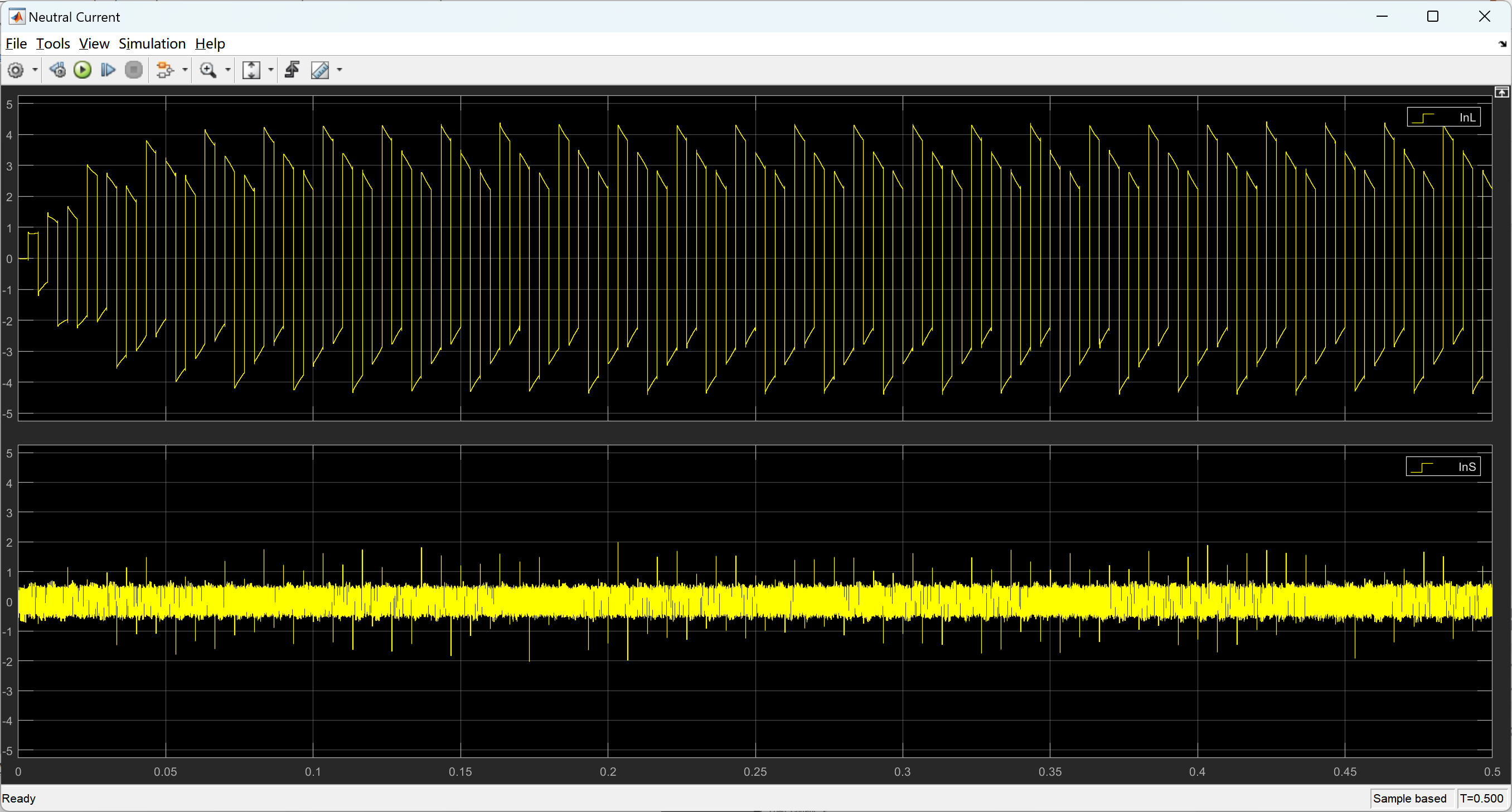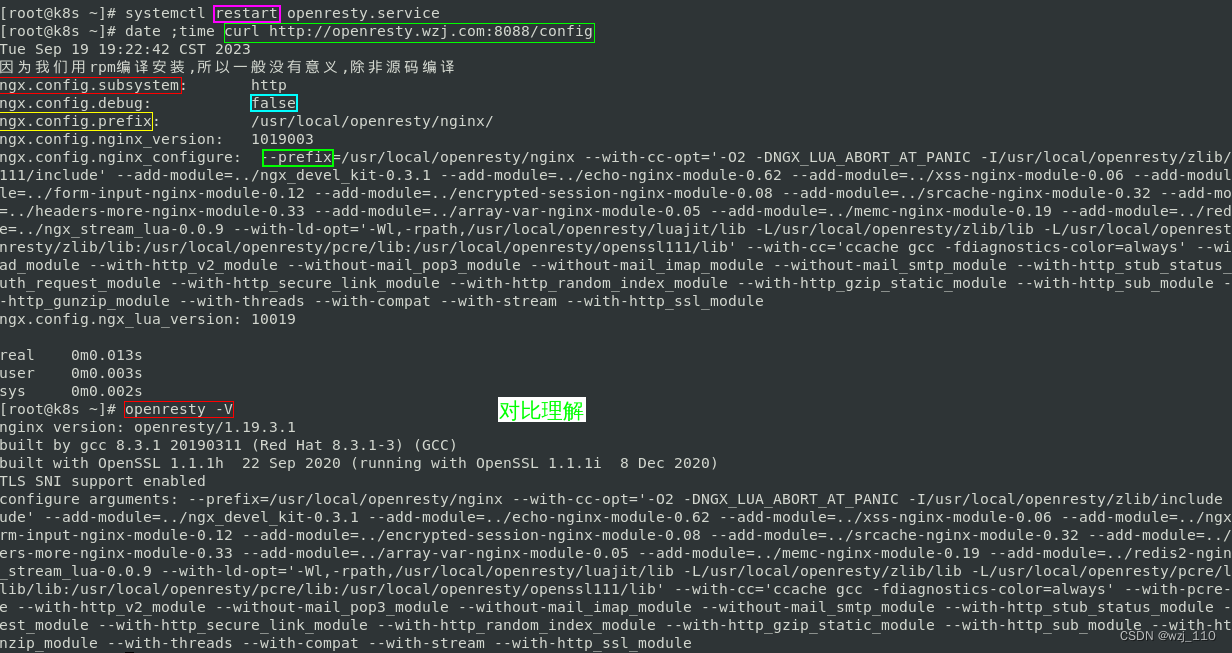目录
1 Pandas介绍
2 Pandas的安装与导入
2.1 Pandas模块安装
2.2 Pandas模块导入
3 pandas数据结构及函数
3.1 Series结构
3.1.1 ndarray创建Series对象
3.1.2 dict创建Series对象
3.1.3 标量创建Series对象
3.1.4 位置索引访问Series数据
3.1.5 标签索引访问Series数据
3.1.6 Series常用属性axes
3.1.7 Series常用属性index
3.1.8 Series常用属性values
3.2 DataFrame结构
3.2.1 列表创建DataFame对象
3.2.2 字典嵌套列表创建DataFrame对象
3.2.3 列表嵌套字典创建DataFrame对象
3.2.4 Series创建DataFrame对象
3.2.5 列索引选取DataFrame数据
3.2.6 列索引添加DataFrame数据
3.2.7 列索引删除DataFrame数据
3.2.8 行标签索引选取DataFrame数据
3.2.9 整数索引选取DataFrame数据
3.2.10 切片操作多行选取DataFrame数据
3.2.11 添加DataFrame数据行
3.2.12 删除DataFrame数据行
3.2.13 DataFrame属性方法info(),index,coloumns,values ,axes
3.2.14 head()&tail()查看DataFrame数据
3.2.15 dtypes查看DataFrame数据类型
3.2.16 empty判断DataFrame是否为空
3.2.17 ndim&shape查看DataFrame维数和维度
3.2.18 size查看DataFrame的元素数量
3.2.19 T(Transpose)对DataFrame转置
3.3 pandas描述性统计
3.3.1 垂直和水平方向的所有值求和
3.3.2 mean()求均值
3.3.3 std()求标准差
3.3.4 自定义函数:操作整个数据表 pipe()
3.3.5 自定义函数:操作行或者列apply()
3.4 pandas iteration遍历
3.4.1 以 (row_index,row) 的形式遍历行iterrows():
3.4.2 使用已命名元组的方式遍历行itertuples()
3.5 pandas sorting排序
3.5.1 axis=0, ascending=True 默认按“行标签”升序排列
3.5.2 axis=1 按“列标签”升序排列
3.6 pandas去重函数
3.6.1 保留第一次出现的行重复项
3.6.2 keep=False删除所有行重复项
3.6.3 subset删除指定的单列去重
3.6.4 subset指定多列同时去重
3.7 Pandas缺失值处理
3.7.1 检查缺失值
3.7.2 缺失数据计算
3.7.3 清理并填充缺失值
3.7.4 使用replace替换通用值
3.7.5 删除缺失值
3.8 pandas csv操作
3.8.1 read_csv()读取文件
3.8.2 names更改文件标头名
3.8.3 skiprows跳过指定的行数
3.8.4 to_csv()转换数据
3.9 pandas操作Excel
3.9.1 to_excel()数据转换
3.9.2 一次性插入多个sheet数据
3.9.3 追加sheet表内容
3.9.4 read_excel()读取数据
3.10 pandas支持的文件格式
1 Pandas介绍
Pandas 是一个开源的第三方 Python 库,从 Numpy 和 Matplotlib 的基础上构建而来,享有数据分析“三剑客之一”的盛名(NumPy、Matplotlib、Pandas)。Pandas 已经成为 Python 数据分析的必备高级工具,它的目标是成为强大、灵活、可以支持任何编程语言的数据分析工具。Pandas具有如下特点:
- DataFrame是一种高效快速的数据结构模式,Pandas支持DataFrame格式,从而可以自定义索引
- 可以将不同格式的数据文件加载到内存中
- 未对齐及其索引方式不同的数据可按轴自动对齐
- 可处理时间序列或非时间序列数据
- 可基于标签来切片索引,获得大数据集子集
- 可进行高性能数据分组、聚合、添加、删除
- 灵活处理数据缺失、重组、空格
Pandas广泛用于金融、经济、数据分析、统计等商业领域,为各个领域数据从业者提供了便捷。
官网地址:https://pandas.pydata.org/
2 Pandas的安装与导入
2.1 Pandas模块安装
Python自带的包管理工具pip来安装:
pip install pandas2.2 Pandas模块导入
Pandas的导入
import pandas as pd
import numpy as np # pandas和numpy常常结合在一起使用3 pandas数据结构及函数
构建和处理二维、多维数组是一项繁琐的任务。Pandas 为解决这一问题, 在 ndarray 数组(NumPy 中的数组)的基础上构建出了两种不同的数据结构,分别是 Series(一维数据结构)和 DataFrame(二维数据结构):
- Series 是带标签的一维数组,这里的标签可以理解为索引,但这个索引并不局限于整数,它也可以是字符类型,比如 a、b、c 等;
- DataFrame 是一种表格型数据结构,它既有行标签,又有列标签。
| 数据结构 | 维度 | 说明 |
| Series | 1 | 该结构能够存储各种数据类型,比如字符数、整数、浮点数、Python 对象等,Series 用 name 和 index 属性来描述 数据值。Series 是一维数据结构,因此其维数不可以改变。 |
| DataFrame | 2 | DataFrame 是一种二维表格型数据的结构,既有行索引,也有列索引。行索引是 index,列索引是 columns。 在创建该结构时,可以指定相应的索引值。 |
3.1 Series结构
Series 结构,也称Series序列,是Pandas常用的数据结构之一,它是一种类似于一维数组的结构,由一组数据值(value)和一组标签组成,其中标签与数据值之间是一一对应的关系。
Series 可以保存任何数据类型,比如整数、字符串、浮点数、Python 对象等,它的标签默认为整数,从 0 开始依次递增。Series 的结构图,如下所示:

通过标签我们可以更加直观地查看数据所在的索引位置。
函数原型:
pandas.Series( data, index, dtype, copy)参数说明:
#data 输入的数据,可以是列表、常量、ndarray 数组等。 #index 索引值必须是惟一的,如果没有传递索引,则默认为 #np.arrange(n)。 #dtype dtype表示数据类型,如果没有提供,则会自动判断得出。 #copy 表示对 data 进行拷贝,默认为 False。
可以用数组、字典、标量值或者 Python 对象来创建 Series 对象
Series 访问数据分为两种方式,一种是位置索引访问;另一种是标签索引访问。
Series 的常用属性和方法。在下表列出了 Series 对象的常用属性
| 名称 | 属性 |
| axes | 以列表的形式返回所有行索引标签 |
| dtype | 返回对象的数据类型 |
| empty | 判断Series对象是否为空 |
| ndim | 返回输入数据的维数 |
| size | 返回输入数据的元素数量 |
| values | 以ndarray的形式返回Series对象 |
| index | 返回一个RangeIndex对象,用来描述索引的取值范围。 |
3.1.1 ndarray创建Series对象
import pandas as pd
import numpy as np
data = np.array(['a', 'b', 'c', 'd'])
# 使用默认索引,创建 Series 序列对象
s1 = pd.Series(data)
print(f'默认索引:\n{s1}')
# 使用“显式索引”的方法自定义索引标签
s2 = pd.Series(data, index=[100, 101, 102, 103])
print(f'自定义索引\n{s2}')运行结果显示如下:
默认索引:
0 a
1 b
2 c
3 d
dtype: object
自定义索引
100 a
101 b
102 c
103 d
dtype: object示例中s1没有传递任何索引,所以索引默认从 0 开始分配 ,其索引范围为 0 到len(data)-1。
3.1.2 dict创建Series对象
把 dict 作为输入数据。如果没有传入索引时会按照字典的键来构造索引;反之,当传递了索引时需要将索引标签与字典中的值一一对应。
import pandas as pd
import numpy as np
data = {'a': 0, 'b': 1, 'c': 2}
# 没有传递索引时 会按照字典的键来构造索引
s1_dict = pd.Series(data)
print(f'没有传递索引\n{s1_dict}')
# 字典类型传递索引时 索引时需要将索引标签与字典中的值一一对应
# 当传递的索引值无法找到与其对应的值时,使用 NaN(非数字)填充
s2_dict = pd.Series(data, index=['a', 'b', 'c', 'd'])
print(f'传递索引\n{s2_dict}')运行结果显示如下:
没有传递索引
a 0
b 1
c 2
dtype: int64
传递索引
a 0.0
b 1.0
c 2.0
d NaN
dtype: float643.1.3 标量创建Series对象
import pandas as pd
import numpy as np
# 如果data是标量值,则必须提供索引: 标量值按照 index 的数量进行重复,并与其一一对应
s3 = pd.Series(6, index=[0,1,2,3])
print(f'标量值,则必须提供索引\n{s3}')运行结果显示如下:
标量值,则必须提供索引
0 6
1 6
2 6
3 6
dtype: int643.1.4 位置索引访问Series数据
import pandas as pd
s = pd.Series([1, 2, 3, 4, 5], index=['a', 'b', 'c', 'd', 'e'])
print(f'Series数据\n{s}')
# 位置索引 第一个位置索引:0
print(f'位置索引={s[0]}')
# 标签索引 第一个标签索引:a
print(f'标签索引={s["a"]}')#
# 通过切片的方式访问 Series 序列中的数据
print(f'前两个元素\n{s[:2]}')
print(f'最后三个元素\n{s[-3:]}')运行结果显示如下:
Series数据
a 1
b 2
c 3
d 4
e 5
dtype: int64
位置索引=1
标签索引=1
前两个元素
a 1
b 2
dtype: int64
最后三个元素
c 3
d 4
e 5
dtype: int643.1.5 标签索引访问Series数据
Series 类似于固定大小的 dict,把 index 中的索引标签当做 key,而把 Series 序列中的元素值当做 value,然后通过 index 索引标签来访问或者修改元素值。
import pandas as pd
s = pd.Series([1, 2, 3, 4, 5],index=['a', 'b', 'c', 'd', 'e'])
print(f'Series数据\n{s}')
# 标签索引访问单个元素
print(f'标签索引访问单个元素={s["a"]}')
# 标签索引访问多个元素
print(f'标签索引访问多个元素\n{s[["a","b","c"]]}')运行结果显示如下:
Series数据
a 1
b 2
c 3
d 4
e 5
dtype: int64
标签索引访问单个元素=1
标签索引访问多个元素
a 1
b 2
c 3
dtype: int64访问不包括的标签会抛出异常
3.1.6 Series常用属性axes
import pandas as pd
import numpy as np
s = pd.Series(np.random.randn(5))
print(f'默认索引\n{s}')
s1 = pd.Series(np.random.randn(5), index=['a', 'b', 'c', 'd', 'e'])
print(f'自定义索引\n{s1}')
# axes以列表的形式返回所有行索引标签
print(f'默认索引:{s.axes}')
print(f'自定义索引:{s1.axes}')运行结果显示如下:
默认索引
0 0.327024
1 0.679870
2 0.714354
3 -0.215886
4 -1.857184
dtype: float64
自定义索引
a -0.375701
b -1.400197
c -0.187348
d -0.853269
e 0.129702
dtype: float64
默认索引:[RangeIndex(start=0, stop=5, step=1)]
自定义索引:[Index(['a', 'b', 'c', 'd', 'e'], dtype='object')]3.1.7 Series常用属性index
import pandas as pd
import numpy as np
s = pd.Series(np.random.randn(5))
print(f'默认索引\n{s}')
s1 = pd.Series(np.random.randn(5), index=['a', 'b', 'c', 'd', 'e'])
print(f'自定义索引\n{s1}')
# index返回一个RangeIndex对象,用来描述索引的取值范围
print(f'默认索引:{s.index}')
#
print(f'自定义索引:{s1.index}')
# 通过.index.values 获取索引列表
print(s.index.values)
print(s1.index.values)运行结果显示如下:
默认索引
0 0.200998
1 0.469934
2 0.096422
3 -0.399627
4 0.783720
dtype: float64
自定义索引
a -1.639293
b -0.128694
c -0.940741
d -1.547780
e 0.670969
dtype: float64
默认索引:RangeIndex(start=0, stop=5, step=1)
自定义索引:Index(['a', 'b', 'c', 'd', 'e'], dtype='object')
[0 1 2 3 4]
['a' 'b' 'c' 'd' 'e']
3.1.8 Series常用属性values
import pandas as pd
import numpy as np
s = pd.Series(np.random.randn(5))
print(f'默认索引\n{s}')
# values以数组的形式返回Series对象中的数据。
print(s.values)运行结果显示如下:
默认索引
0 -0.772736
1 -0.473425
2 -0.588307
3 0.723052
4 0.601033
dtype: float64
[-0.77273598 -0.47342456 -0.5883065 0.72305156 0.60103283]
3.2 DataFrame结构
DataFrame一个表格型的数据结构,既有行标签(index),又有列标签(columns),它也被称异构数据表,所谓异构,指的是表格中每列的数据类型可以不同,比如可以是字符串、整型或者浮点型等。其结构图示意图,如下所示:

函数原型如下:
pandas.DataFrame( data, index, columns, dtype, copy)参数说明:
data 输入的数据,可以是 ndarray,series,list,dict,标量以及一个 DataFrame。 index 行标签,如果没有传递 index 值,则默认行标签是 np.arange(n),n 代表 data 的元素个数。 columns 列标签,如果没有传递 columns 值,则默认列标签是 np.arange(n)。 dtype dtype表示每一列的数据类型。 copy 默认为 False,表示复制数据 data。
DataFrame 的属性和方法,如下所示:
| 名称 | 属性&方法描述 |
| index | 返回行索引 |
| coloumns | 返回列索引 |
| values | 使用numpy数组表示Dataframe中的元素值 |
| head() | 返回前 n 行数据。 |
| tail() | 返回后 n 行数据。 |
| axes | 返回一个仅以行轴标签和列轴标签为成员的列表。 |
| dtypes | 返回每列数据的数据类型。 |
| empty | DataFrame中没有数据或者任意坐标轴的长度为0,则返回True。 |
| ndim | 轴的数量,也指数组的维数。 |
| shape | DataFrame中的元素数量。 |
| shift() | 将行或列移动指定的步幅长度 |
| T | 行和列转置。 |
| info() | 返回相关的信息:行数 列数,列索引 列非空值个数, 列类型 |
3.2.1 列表创建DataFame对象
import pandas as pd
# 单一列表创建 DataFrame
data = [1, 2, 3]
df1 = pd.DataFrame(data)
print(f'单一列表\n{df1}')
# 使用嵌套列表创建 DataFrame 对象
data = [['java', '10'], ['python', '20'], ['C++', '30']]
df2 = pd.DataFrame(data)
print(f'嵌套列表创建\n{df2}')
# 指定数值元素的数据类型为float: 并指定columns
df3 = pd.DataFrame(data, columns=['name', 'age'], dtype=(str, float))
print(f'指定数据类型和colums\n{df3}')运行结果显示如下:
单一列表
0
0 1
1 2
2 3
嵌套列表创建
0 1
0 java 10
1 python 20
2 C++ 30
指定数据类型和colums
name age
0 java 10
1 python 20
2 C++ 303.2.2 字典嵌套列表创建DataFrame对象
data字典中,键对应值的元素长度必须相等(也就是列表的长度相等),如果传递索引那么索引的长度必须等于列表的长度;如果没有传递索引,默认情况下 索引应为range(n)。n代表的列表的长度
import pandas as pd
data = {'Name': ['Tom', 'Jack', 'Steve', 'Ricky'], 'Age': [28, 34, 29, 42]}
df1 = pd.DataFrame(data)
print(f'默认索引\n{df1}')
df2 = pd.DataFrame(data, index=['a', 'b', 'c', 'd'])
print(f'自定义索引\n{df2}')运行结果显示如下:
默认索引
Name Age
0 Tom 28
1 Jack 34
2 Steve 29
3 Ricky 42
自定义索引
Name Age
a Tom 28
b Jack 34
c Steve 29
d Ricky 423.2.3 列表嵌套字典创建DataFrame对象
列表嵌套字典作为传入的值时,默认情况下 字典的键作为名(coloumns)
注意:如果某个元素的值缺失,也就是字典的key无法找到对应的Value,将使用NaN代替
import pandas as pd
# 字典的键被用作列名 如果其中某个元素值缺失,也就是字典的 key 无法找到对应的 value,将使用 NaN 代替。
data = [{'a': 1, 'b': 2}, {'a': 5, 'b': 10, 'c': 20}]
df1 = pd.DataFrame(data)
print(df1)
# 自定义行标签索引
df2 = pd.DataFrame(data, index=['first', 'second'])
print(df2)
# 如果列名 在字典键中不存在,所以对应值为 NaN。
df3 = pd.DataFrame(data, index=['first', 'second'], columns=['a', 'b'])
df4 = pd.DataFrame(data, index=['first', 'second'], columns=['a', 'b1'])
print(f'df3的列名在字典键中存在\n{df3}')
print(f'df4的列名b1在字典键不中存在\n{df4}')运行结果显示如下:
a b c
0 1 2 NaN
1 5 10 20.0
a b c
first 1 2 NaN
second 5 10 20.0
df3的列名在字典键中存在
a b
first 1 2
second 5 10
df4的列名b1在字典键不中存在
a b1
first 1 NaN
second 5 NaN3.2.4 Series创建DataFrame对象
传递一个字典形式的 Series,从而创建一个 DataFrame 对象,其输出结果的行索引是所有 index 的合集
import pandas as pd
# Series创建DataFrame对象 其输出结果的行索引是所有index的合集
data = {'one': pd.Series([1, 2, 3], index=['a', 'b', 'c']),
'two': pd.Series([1, 2, 3, 4], index=['a', 'b', 'c', 'd'])}
df = pd.DataFrame(data)
print(df)运行结果显示如下:
one two
a 1.0 1
b 2.0 2
c 3.0 3
d NaN 43.2.5 列索引选取DataFrame数据
DataFrame 可以使用列索引(columns index)来完成数据的选取、添加和删除操作
import pandas as pd
data = [['java', 10, 9], ['python', 20, 100], ['C++', 30, 50]]
df1 = pd.DataFrame(data, columns=['name', 'age', 'number'])
print(f'数据df1\n{df1}')
# 获取数据方式一:使用列索引,实现数据获取某一行数据 df[列名]等于df.列名
print(f'通过df1.name方式获取\n{df1.name}')
print(f'通过df1["name"]方式获取\n{df1["name"]}')
# 获取数据方式二:使用列索引,实现数据获取某多行数据 df[list]
print(f'通过df[list]方式获取多列数据\n{df1[["name","number"]]}')
# 获取数据方式三:使用布尔值筛选获取某行数据
# 不同的条件用()包裹起来,并或非分别使用&,|,~而非and,or,not
print(f'获取name=python的数据\n{df1[df1["name"]=="python"]}')
print(f'获取age大于等于20的数据\n{df1[df1["age"]>=20]}')
print(f'获取name=python的数据或者是age等于30\n{df1[(df1["name"]=="python") | (df1["age"]==30)]}')运行结果显示如下:
数据df1
name age number
0 java 10 9
1 python 20 100
2 C++ 30 50
通过df1.name方式获取
0 java
1 python
2 C++
Name: name, dtype: object
通过df1["name"]方式获取
0 java
1 python
2 C++
Name: name, dtype: object
通过df[list]方式获取多列数据
name number
0 java 9
1 python 100
2 C++ 50
获取name=python的数据
name age number
1 python 20 100
获取age大于等于20的数据
name age number
1 python 20 100
2 C++ 30 50
获取name=python的数据或者是age等于30
name age number
1 python 20 100
2 C++ 30 503.2.6 列索引添加DataFrame数据
使用 columns 列索引表标签可以实现添加新的数据列
import pandas as pd
# 列索引添加数据列
data = {'one': [1, 2, 3], 'two': [2, 3, 4]}
df1 = pd.DataFrame(data, index=['a', 'b', 'c'])
print(f'原数据\n{df1}')
# 方式一:使用df['列']=值,插入新的数据列
df1['three'] = pd.Series([10, 20, 30], index=list('abc'))
print(f'使用df["列"]=值,插入新的数据\n{df1}')
# 方式二:#将已经存在的数据列做相加运算
df1['four'] = df1['one']+df1['three']
print(f'将已经存在的数据列做相加运算\n{df1}')
# 方式三:使用 insert() 方法插入新的列
# 数值4代表插入到columns列表的索引位置
df1.insert(4, column='score', value=[50, 60, 70])
print(f'使用insert()方法插入\n{df1}')运行结果显示如下:
原数据
one two
a 1 2
b 2 3
c 3 4
使用df["列"]=值,插入新的数据
one two three
a 1 2 10
b 2 3 20
c 3 4 30
将已经存在的数据列做相加运算
one two three four
a 1 2 10 11
b 2 3 20 22
c 3 4 30 33
使用insert()方法插入
one two three four score
a 1 2 10 11 50
b 2 3 20 22 60
c 3 4 30 33 703.2.7 列索引删除DataFrame数据
通过del和pop()都能够删除DataFrame中的数据列
import pandas as pd
data = {'one': [1, 2, 3], 'two': [20, 30, 40], 'three': [20, 30, 40]}
df1 = pd.DataFrame(data, index=['a', 'b', 'c'])
print(f'原数据\n{df1}')
# 方式一 del 删除某一列
del df1["one"]
print(f'通过del df["列名"]删除\n{df1}')
# 方式er pop() 删除某一列
df1.pop("two")
print(f'通过pop("列名")删除\n{df1}')运行结果显示如下:
原数据
one two three
a 1 20 20
b 2 30 30
c 3 40 40
通过del df["列名"]删除
two three
a 20 20
b 30 30
c 40 40
通过pop("列名")删除
three
a 20
b 30
c 403.2.8 行标签索引选取DataFrame数据
可以将行标签传递给 loc 函数,来选取数据,loc 允许接两个参数分别是行和列,参数之间需要使用“逗号”隔开,但该函数只能接收标签索引。
import pandas as pd
data = {'one': [1, 2, 3, 4], 'two': [20, 30, 40, 50], 'three': [60, 70, 80, 90]}
df1 = pd.DataFrame(data, index=['a', 'b', 'c', 'd'])
print(f'原数据\n{df1}')
# 取某一行数据
print(f'取某一行数据\n{df1.loc["a"]}')
# loc允许接两个参数分别是行和列,参数之间需要使用“逗号”隔开,但该函数只能接收标签索引
# 获取某一个单元格的数据
print(f"取某一个单元格的数据\n{df1.loc['a','two']}")
# 更改某一个单元格的数据
df1.loc['a', 'two'] = 'abc'
print(f"更改后的数据\n{df1}")运行结果显示如下:
原数据
one two three
a 1 20 60
b 2 30 70
c 3 40 80
d 4 50 90
取某一行数据
one 1
two 20
three 60
Name: a, dtype: int64
取某一个单元格的数据
20
更改后的数据
one two three
a 1 abc 60
b 2 30 70
c 3 40 80
d 4 50 90
3.2.9 整数索引选取DataFrame数据
通过将数据行所在的索引位置传递给 iloc 函数,也可以实现数据行选取。iloc 允许接受两个参数分别是行和列,参数之间使用“逗号”隔开,但该函数只能接收整数索引。
import pandas as pd
data = {'one': [1, 2, 3, 4], 'two': [20, 30, 40, 50],'three': [60, 70, 80, 90]}
df1 = pd.DataFrame(data,index=['a', 'b', 'c', 'd'])
print(f'原数据\n{df1}')
# 取某一行的数据 索引是从0开始
print(f'取某一行的数据\n{df1.iloc[0]}')运行结果显示如下:
原数据
one two three
a 1 20 60
b 2 30 70
c 3 40 80
d 4 50 90
取某一行的数据
one 1
two 20
three 60
Name: a, dtype: int64
3.2.10 切片操作多行选取DataFrame数据
loc 允许接两个参数分别是行和列,参数之间需要使用“逗号”隔开,但该函数只能接收标签索引。
iloc 允许接受两个参数分别是行和列,参数之间使用“逗号”隔开,但该函数只能接收整数索引。
import pandas as pd
data = {'one': [1, 2, 3, 4], 'two': [20, 30, 40, 50], 'three': [60, 70, 80, 90]}
df1 = pd.DataFrame(data,index=['a', 'b', 'c', 'd'])
print(f'原数据\n{df1}')
# loc[] 允许接两个参数分别是行和列,参数之间需要使用“逗号”隔开,但该函数只能接收标签索引
print(f"#loc[]方式获取第三行最后两列数据\n{df1.loc['c','two':'three']}")
# iloc[] 允许接受两个参数分别是行和列,参数之间使用“逗号”隔开,但该函数只能接收整数索引。
print(f"#iloc[]方式获取第三行最后两列数据\n{df1.iloc[2,1:3]}")运行结果显示如下:
原数据
one two three
a 1 20 60
b 2 30 70
c 3 40 80
d 4 50 90
#loc[]方式获取第三行最后两列数据
two 40
three 80
Name: c, dtype: int64
#iloc[]方式获取第三行最后两列数据
two 40
three 80
Name: c, dtype: int643.2.11 添加DataFrame数据行
使用append()函数,可以将新的数据行添加到DataFrame中,该函数会在行末追加数据行
import pandas as pd
data = {'one': [1, 2, 3, 4], 'two': [20, 30, 40, 50], 'three': [60, 70, 80, 90]}
df1 = pd.DataFrame(data, index=['a', 'b', 'c', 'd'])
print(f'#原数据\n{df1}')
df2 = pd.DataFrame({'one': 'Q', 'two': 'W'}, index=['e'])
# 使用append()返回一个新的是DataFrame的对象
df = df1._append(df2)
print(f'#在行末追加新数据行\n{df}')运行结果显示如下:
#原数据
one two three
a 1 20 60
b 2 30 70
c 3 40 80
d 4 50 90
#在行末追加新数据行
one two three
a 1 20 60.0
b 2 30 70.0
c 3 40 80.0
d 4 50 90.0
e Q W NaN3.2.12 删除DataFrame数据行
可以使用行索引标签,从 DataFrame 中删除某一行数据。如果索引标签存在重复,那么它们将被一起删除
pop(行索引) 删除某一行
pop(列名) 删除某一列
注意:如果有重复的行索引并通过drop()会同时删除
import pandas as pd
data = {'one': [1, 2, 3, 4], 'two': [20, 30, 40, 50], 'three': [60, 70, 80, 90]}
df1 = pd.DataFrame(data,index=['a', 'b', 'c', 'd'])
print(f'原数据\n{df1}')
# pop(行索引) 删除某一行
df = df1.drop('a')
print(f'pop(行索引) 删除某一行\n{df}')
# pop(列名) 删除某一列
df1.pop("one")
print(f'#pop(列名) 删除某一列\n{df1}')运行结果显示如下:
原数据
one two three
a 1 20 60
b 2 30 70
c 3 40 80
d 4 50 90
pop(行索引) 删除某一行
one two three
b 2 30 70
c 3 40 80
d 4 50 90
#pop(列名) 删除某一列
two three
a 20 60
b 30 70
c 40 80
d 50 903.2.13 DataFrame属性方法info(),index,coloumns,values ,axes
- info():返回DataFrame对象的相关信息
- index:返回行索引
- coloumns:返回列索引
- values:使用numpy数组表示Dataframe中的元素值
- axes: 返回一个行标签、列标签组成的列表
import pandas as pd
data = {
'name:': pd.Series(['c语言中文网', "百度", '360搜索', '谷歌', 'Bing搜索', 'CSDN', '华为云']),
'year': pd.Series([5, 6, 15, 28, 3, 19, 23]),
'Rating': pd.Series([4.23, 3.24, 3.98, 2.56, 3.20, 4.6, 3.8])}
df = pd.DataFrame(data)
print(f'#原数据\n{df}')
# info() 获取相关信息
print(f'#df.info()获取DataFrame相关信息\n{df.info()}')
# index 获取行索引
print(f'#df.index 获取行索引\n{df.index}')
# coloumns 获取行索引
print(f'#df.columns 获取列索引\n{df.columns}')
# axes 获取行标签、列标签组成的列表
print(f'#df.axes 获取行标签、列标签组成的列表\n{df.axes}')
# values 使用numpy数组表示Dataframe中的元素值
print(f'#df.values获取Dataframe中的元素值\n{df.values}')运行结果显示如下:
#原数据
name: year Rating
0 c语言中文网 5 4.23
1 百度 6 3.24
2 360搜索 15 3.98
3 谷歌 28 2.56
4 Bing搜索 3 3.20
5 CSDN 19 4.60
6 华为云 23 3.80
<class 'pandas.core.frame.DataFrame'>
RangeIndex: 7 entries, 0 to 6
Data columns (total 3 columns):
# Column Non-Null Count Dtype
--- ------ -------------- -----
0 name: 7 non-null object
1 year 7 non-null int64
2 Rating 7 non-null float64
dtypes: float64(1), int64(1), object(1)
memory usage: 296.0+ bytes
#df.info()获取DataFrame相关信息
None
#df.index 获取行索引
RangeIndex(start=0, stop=7, step=1)
#df.columns 获取列索引
Index(['name:', 'year', 'Rating'], dtype='object')
#df.axes 获取行标签、列标签组成的列表
[RangeIndex(start=0, stop=7, step=1), Index(['name:', 'year', 'Rating'], dtype='object')]
#df.values获取Dataframe中的元素值
[['c语言中文网' 5 4.23]
['百度' 6 3.24]
['360搜索' 15 3.98]
['谷歌' 28 2.56]
['Bing搜索' 3 3.2]
['CSDN' 19 4.6]
['华为云' 23 3.8]]3.2.14 head()&tail()查看DataFrame数据
如果想要查看 DataFrame 的一部分数据,可以使用 head() 或者 tail() 方法。其中 head() 返回前 n 行数据,默认显示前 5 行数据
import pandas as pd
data = {
'name:': pd.Series(['c语言中文网', "百度", '360搜索', '谷歌', 'Bing搜索', 'CSDN', '华为云']),
'year': pd.Series([5, 6, 15, 28, 3, 19, 23]),
'Rating': pd.Series([4.23, 3.24, 3.98, 2.56, 3.20, 4.6, 3.8])}
df = pd.DataFrame(data)
print(f'#原数据\n{df}')
# head(n) 返回前n行数据 默认是前5行
print(f'#df.head(n) 返回前n行数据\n{df.head(2)}')
# tail(n) 返回后n行数据
print(f'#df.tail(n) 返回后n行数据\n{df.tail(2)}')运行结果显示如下:
#原数据
name: year Rating
0 c语言中文网 5 4.23
1 百度 6 3.24
2 360搜索 15 3.98
3 谷歌 28 2.56
4 Bing搜索 3 3.20
5 CSDN 19 4.60
6 华为云 23 3.80
#df.head(n) 返回前n行数据
name: year Rating
0 c语言中文网 5 4.23
1 百度 6 3.24
#df.tail(n) 返回后n行数据
name: year Rating
5 CSDN 19 4.6
6 华为云 23 3.83.2.15 dtypes查看DataFrame数据类型
返回每一列数据的类型
import pandas as pd
data = {
'name:': pd.Series(['c语言中文网', "百度", '360搜索', '谷歌', 'Bing搜索', 'CSDN', '华为云']),
'year': pd.Series([5, 6, 15, 28, 3, 19, 23]),
'Rating': pd.Series([4.23, 3.24, 3.98, 2.56, 3.20, 4.6, 3.8])}
df = pd.DataFrame(data)
print(f'#原数据\n{df}')
# dtpes 获取每一列数据的数据类型
print(f'#df.dtpes返回每一列的数据类型\n{df.dtypes}')运行结果显示如下:
#原数据
name: year Rating
0 c语言中文网 5 4.23
1 百度 6 3.24
2 360搜索 15 3.98
3 谷歌 28 2.56
4 Bing搜索 3 3.20
5 CSDN 19 4.60
6 华为云 23 3.80
#df.dtpes返回每一列的数据类型
name: object
year int64
Rating float64
dtype: object3.2.16 empty判断DataFrame是否为空
返回一个布尔值,判断输出的数据对象是否为空,若为 True 表示对象为空。
import pandas as pd
data = {
'name:': pd.Series(['c语言中文网', "百度", '360搜索', '谷歌', 'Bing搜索', 'CSDN', '华为云']),
'year': pd.Series([5, 6, 15, 28, 3, 19, 23]),
'Rating': pd.Series([4.23, 3.24, 3.98, 2.56, 3.20, 4.6, 3.8])}
df = pd.DataFrame(data)
print(f'#原数据\n{df}')
# empty 判断输出的数据对象是否为空,若为 True 表示对象为空
print(f'#df.empty 对象是否为空,若为 True 表示对象为空\n{df.empty}')运行结果显示如下:
#原数据
name: year Rating
0 c语言中文网 5 4.23
1 百度 6 3.24
2 360搜索 15 3.98
3 谷歌 28 2.56
4 Bing搜索 3 3.20
5 CSDN 19 4.60
6 华为云 23 3.80
#df.empty 对象是否为空,若为 True 表示对象为空
False3.2.17 ndim&shape查看DataFrame维数和维度
ndimf:返回数据对象的维数
shape:返回一个代表 DataFrame 维度的元组。返回值元组 (a,b),其中 a 表示行数,b 表示列数
import pandas as pd
data = {
'name:': pd.Series(['c语言中文网', "百度", '360搜索', '谷歌', 'Bing搜索', 'CSDN', '华为云']),
'year': pd.Series([5, 6, 15, 28, 3, 19, 23]),
'Rating': pd.Series([4.23, 3.24, 3.98, 2.56, 3.20, 4.6, 3.8])}
df = pd.DataFrame(data)
print(f'#原数据\n{df}')
# ndim 查看DataFrame的维数 同时也适合Series
print(f"#df.ndim 查看DataFrame的维数\n{df.ndim}")
# shape 维度的元组。返回值元组 (a,b),其中 a 表示行数,b 表示列数 同时也适合Series
print(f"#df.shape 维度的元组。返回值元组 (a,b),其中 a 表示行数,b 表示列数\n{df.shape}")运行结果显示如下:
#原数据
name: year Rating
0 c语言中文网 5 4.23
1 百度 6 3.24
2 360搜索 15 3.98
3 谷歌 28 2.56
4 Bing搜索 3 3.20
5 CSDN 19 4.60
6 华为云 23 3.80
#df.ndim 查看DataFrame的维数
2
#df.shape 维度的元组。返回值元组 (a,b),其中 a 表示行数,b 表示列数
(7, 3)
3.2.18 size查看DataFrame的元素数量
返回DataFrame对象的元素数量
import pandas as pd
data = {
'name:': pd.Series(['c语言中文网', "百度", '360搜索', '谷歌', 'Bing搜索', 'CSDN', '华为云']),
'year': pd.Series([5, 6, 15, 28, 3, 19, 23]),
'Rating': pd.Series([4.23, 3.24, 3.98, 2.56, 3.20, 4.6, 3.8])}
df = pd.DataFrame(data)
print(f'#原数据\n{df}')
# size查看DataFrame对象元素的数量
print(f'#df.size 查看DataFrame对象元素的数量\n{df.size}')运行结果显示如下:
#原数据
name: year Rating
0 c语言中文网 5 4.23
1 百度 6 3.24
2 360搜索 15 3.98
3 谷歌 28 2.56
4 Bing搜索 3 3.20
5 CSDN 19 4.60
6 华为云 23 3.80
#df.size 查看DataFrame对象元素的数量
213.2.19 T(Transpose)对DataFrame转置
import pandas as pd
data = {
'name:': pd.Series(['c语言中文网', "百度", '360搜索', '谷歌', 'Bing搜索', 'CSDN', '华为云']),
'year': pd.Series([5, 6, 15, 28, 3, 19, 23]),
'Rating': pd.Series([4.23, 3.24, 3.98, 2.56, 3.20, 4.6, 3.8])}
df = pd.DataFrame(data)
print(f'#原数据\n{df}')
# T(Transpose)转置 把行和列进行交换
print(f'#df.T把行和列进行交换\n{df.T}')运行结果显示如下:
#原数据
name: year Rating
0 c语言中文网 5 4.23
1 百度 6 3.24
2 360搜索 15 3.98
3 谷歌 28 2.56
4 Bing搜索 3 3.20
5 CSDN 19 4.60
6 华为云 23 3.80
#df.T把行和列进行交换
0 1 2 3 4 5 6
name: c语言中文网 百度 360搜索 谷歌 Bing搜索 CSDN 华为云
year 5 6 15 28 3 19 23
Rating 4.23 3.24 3.98 2.56 3.2 4.6 3.8
3.3 pandas描述性统计
描述统计学(descriptive statistics)是一门统计学领域的学科,主要研究如何取得反映客观现象的数据,并以图表形式对所搜集的数据进行处理和显示,最终对数据的规律、特征做出综合性的描述分析。Pandas 库正是对描述统计学知识完美应用的体现,可以说如果没有“描述统计学”作为理论基奠,那么 Pandas 是否存在犹未可知。下列表格对Pandas常用的统计学函数做了简单的总结:
| 函数名称 | 描述说明 |
|---|---|
| count() | 统计某个非空值的数量。 |
| sum() | 求和 |
| mean() | 求均值 |
| median() | 求中位数 |
| mode() | 求众数 |
| std() | 求标准差 |
| min() | 求最小值 |
| max() | 求最大值 |
| abs() | 求绝对值 |
| prod() | 求所有数值的乘积。 |
| cumsum() | 计算累计和,axis=0,按照行累加;axis=1,按照列累加。 |
| cumprod() | 计算累计积,axis=0,按照行累积;axis=1,按照列累积。 |
| corr() | 计算数列或变量之间的相关系数,取值-1到1,值越大表示关联性越强。 |
在 DataFrame 中,使用聚合类方法时需要指定轴(axis)参数。下面介绍两种传参方式:
- 对行操作,默认使用 axis=0 或者使用 "index";
- 对列操作,默认使用 axis=1 或者使用 "columns"。
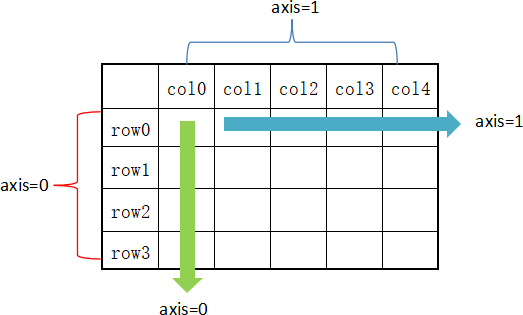
从图 上 可以看出,axis=0 表示按垂直方向进行计算,而 axis=1 则表示按水平方向。
如果想要应用自定义的函数,或者把其他库中的函数应用到 Pandas 对象中,有以下三种方法:
- 操作整个 DataFrame 的函数:pipe()
- 操作行或者列的函数:apply()
- 操作单一元素的函数:applymap()
3.3.1 垂直和水平方向的所有值求和
import pandas as pd
data = {
'name:': pd.Series(['c语言中文网', "百度", '360搜索', '谷歌', 'Bing搜索', 'CSDN', '华为云']),
'year': pd.Series([5, 6, 15, 28, 3, 19, 23]),
'Rating': pd.Series([4.23, 3.24, 3.98, 2.56, 3.20, 4.6, 3.8])}
df = pd.DataFrame(data)
print(f'#原数据\n{df}')
# sum() 默认返回axis=0 (垂直方向)的所有值的和
print(f'#df.sum() 默认返回axis=0(垂直方向)的所有值的和\n{df.sum()}')
df2 = pd.DataFrame(data, columns=['year', 'Rating'])
# sum() 当axis=1 (水平方向)的所有值的和
print(f'#df2.sum(axis=1) 默认返回axis=1 (水平方向)的所有值的和\n{df2.sum(axis=1)}')运行结果显示如下:
#原数据
name: year Rating
0 c语言中文网 5 4.23
1 百度 6 3.24
2 360搜索 15 3.98
3 谷歌 28 2.56
4 Bing搜索 3 3.20
5 CSDN 19 4.60
6 华为云 23 3.80
#df.sum() 默认返回axis=0(垂直方向)的所有值的和
name: c语言中文网百度360搜索谷歌Bing搜索CSDN华为云
year 99
Rating 25.61
dtype: object
#df2.sum(axis=1) 默认返回axis=1 (水平方向)的所有值的和
0 9.23
1 9.24
2 18.98
3 30.56
4 6.20
5 23.60
6 26.80
dtype: float64注意:sum() 和 cumsum() 函数可以同时处理数字和字符串数据。虽然字符聚合通常不被使用,但使用这两个函数并不会抛出异常;而对于 abs()、cumprod() 函数则会抛出异常,因为它们无法操作字符串数据。
3.3.2 mean()求均值
import pandas as pd
data = {
'year': pd.Series([5, 6, 15, 28, 3, 19, 23]),
'Rating': pd.Series([4.23, 3.24, 3.98, 2.56, 3.20, 4.6, 3.8])}
df = pd.DataFrame(data)
print(f'#原数据\n{df}')
# mean() 求平均值
print(f'#mean() 平均值\n{df.mean()}')运行结果显示如下:
#原数据
year Rating
0 5 4.23
1 6 3.24
2 15 3.98
3 28 2.56
4 3 3.20
5 19 4.60
6 23 3.80
#mean() 平均值
year 14.142857
Rating 3.658571
dtype: float643.3.3 std()求标准差
返回数值列的标准差,标准差是方差的算术平方根,它能反映一个数据集的离散程度。注意,平均数相同的两组数据,标准差未必相同。
import pandas as pd
data = {
'year': pd.Series([5, 6, 15, 28, 3, 19, 23]),
'Rating': pd.Series([4.23, 3.24, 3.98, 2.56, 3.20, 4.6, 3.8])}
df = pd.DataFrame(data)
print(f'#原数据\n{df}')
print(f'#df.std()求标准差\n{df.std()}')运行结果显示如下:
#原数据
year Rating
0 5 4.23
1 6 3.24
2 15 3.98
3 28 2.56
4 3 3.20
5 19 4.60
6 23 3.80
#df.std()求标准差
year 9.737018
Rating 0.698628
dtype: float643.3.4 自定义函数:操作整个数据表 pipe()
通过给 pipe() 函数传递一个自定义函数和适当数量的参数值,从而操作 DataFrme 中的所有元素。下面示例,实现了数据表中的元素值依次加 3
pip()传入函数对应的第一个位置上的参数必须是目标Series或DataFrame,其他相关的参数使用常规的键值对方式传入即可
import pandas as pd
import numpy as np
# 自定义函数
def adder(ele1, ele2):
return ele1+ele2
# 操作DataFrame
df = pd.DataFrame(np.random.randn(4, 3), columns=['c1', 'c2', 'c3'])
# 相加前
print(f'#原数据\n{df}')
# 相加后
print(f'#df.pipe()相加后的数据\n{df.pipe(adder,3)}')运行结果显示如下:
#原数据
c1 c2 c3
0 -0.374634 0.290875 0.021671
1 0.757403 0.218652 0.160206
2 -0.177390 -0.891544 -1.550597
3 -0.118167 -0.921873 0.890214
#df.pipe()相加后的数据
c1 c2 c3
0 2.625366 3.290875 3.021671
1 3.757403 3.218652 3.160206
2 2.822610 2.108456 1.449403
3 2.881833 2.078127 3.8902143.3.5 自定义函数:操作行或者列apply()
如果要操作 DataFrame 的某一行或者某一列,可以使用 apply() 方法,该方法与描述性统计方法类似,都有可选参数 axis。
import pandas as pd
import numpy as np
# 自定义函数
def adder(df, data):
data_list =[]
columns = df.index.values
for i in columns:
value = df[i]
data_list.append(value+data)
return np.sum(data_list, axis=0)
df = pd.DataFrame(np.random.randn(5, 3), columns=['col1', 'col2', 'col3'])
print(f'#原始数据\n{df}')
# axis=0默认按列操作,计算每一列均值
print(f'#df.apply(函数)计算每一列均值\n{df.apply(np.mean)}')
df = pd.DataFrame(np.random.randn(5,3),columns=['col1', 'col2', 'col3'])
print(f'#原始数据\n{df}')
# axis=1操作行,对指定行执行自定义函数
df['col4'] = df.apply(adder, args=(3,), axis=1)
print(f'#调用自定义函数\n{df}')运行结果显示如下:
#原始数据
col1 col2 col3
0 1.407879 -1.057357 -0.847865
1 0.389119 -1.620390 -1.269465
2 -0.740838 -0.699992 0.429402
3 -1.431036 1.091103 -0.757014
4 1.264738 -0.162598 0.253011
#df.apply(函数)计算每一列均值
col1 0.177973
col2 -0.489847
col3 -0.438386
dtype: float64
#原始数据
col1 col2 col3
0 1.056548 -0.064314 1.306463
1 0.485457 -0.067215 -1.634539
2 0.120638 -1.214249 0.135860
3 -1.293730 0.477338 -0.925762
4 0.053357 -1.766716 0.050723
#调用自定义函数
col1 col2 col3 col4
0 1.056548 -0.064314 1.306463 11.298697
1 0.485457 -0.067215 -1.634539 7.783704
2 0.120638 -1.214249 0.135860 8.042250
3 -1.293730 0.477338 -0.925762 7.257846
4 0.053357 -1.766716 0.050723 7.3373653.3.5 自定义函数:操作单一元素applymap()
DataFrame的 applymap() 函数可以对DataFrame里的每个值进行处理,然后返回一个新的DataFrame
import pandas as pd
df = pd.DataFrame({
'a': [1, 2, 3],
'b': [10, 20, 30],
'c': [5, 10, 15]
})
print(f'#原始数据\n{df}')
def add_one(x, data):
print(f'x的值 = {x}')
print(f'data的值={data}')
return x + 1
df1 = df.applymap(add_one, data=3)
print(f'#applymap()对每个元素操作后\n{df1}')运行结果显示如下:
#原始数据
a b c
0 1 10 5
1 2 20 10
2 3 30 15
x的值 = 1
data的值=3
x的值 = 2
data的值=3
x的值 = 3
data的值=3
x的值 = 10
data的值=3
x的值 = 20
data的值=3
x的值 = 30
data的值=3
x的值 = 5
data的值=3
x的值 = 10
data的值=3
x的值 = 15
data的值=3
#applymap()对每个元素操作后
a b c
0 2 11 6
1 3 21 11
2 4 31 163.4 pandas iteration遍历
如果想要遍历 DataFrame 的每一行,我们下列函数:
- iterrows():以 (row_index,row) 的形式遍历行;
- itertuples():使用已命名元组的方式遍历行。
3.4.1 以 (row_index,row) 的形式遍历行iterrows():
该方法按行遍历,返回一个迭代器,以行索引标签为键,以每一行数据为值。
import pandas as pd
import numpy as np
df = pd.DataFrame(np.random.randn(4, 3), columns=['col1', 'col2', 'col3'])
print(f'#原始数据\n{df}')
# iteritems():以键值对 (key,value) 的形式遍历 以列标签为键,以对应列的元素为值
for key, row in df.iterrows():
print(f'#key以列标签为键:{key}')
print(f'#row以对应列的元素为值\n{row}')运行结果显示如下:
#原始数据
col1 col2 col3
0 -0.968361 -0.980524 0.645811
1 -1.742061 -0.034852 1.625160
2 -0.152453 -0.186645 0.330469
3 0.837739 0.687838 -0.991223
#key以列标签为键:0
#row以对应列的元素为值
col1 -0.968361
col2 -0.980524
col3 0.645811
Name: 0, dtype: float64
#key以列标签为键:1
#row以对应列的元素为值
col1 -1.742061
col2 -0.034852
col3 1.625160
Name: 1, dtype: float64
#key以列标签为键:2
#row以对应列的元素为值
col1 -0.152453
col2 -0.186645
col3 0.330469
Name: 2, dtype: float64
#key以列标签为键:3
#row以对应列的元素为值
col1 0.837739
col2 0.687838
col3 -0.991223
Name: 3, dtype: float643.4.2 使用已命名元组的方式遍历行itertuples()
import pandas as pd
import numpy as np
df = pd.DataFrame(np.random.randn(4, 3), columns=['col1', 'col2', 'col3'])
print(f'#原始数据\n{df}')
for row in df.itertuples():
print(f'#每一行生成一个元组\n{row}')运行结果显示如下:
#原始数据
col1 col2 col3
0 -1.050943 1.098056 -0.858725
1 -0.348473 0.604341 0.249866
2 0.709212 -0.807796 -1.241162
3 -2.333712 -0.830910 -0.952756
#每一行生成一个元组
Pandas(Index=0, col1=-1.0509429373784085, col2=1.098055755892262, col3=-0.8587250615671127)
#每一行生成一个元组
Pandas(Index=1, col1=-0.34847318195598975, col2=0.604340877173634, col3=0.24986633604748865)
#每一行生成一个元组
Pandas(Index=2, col1=0.7092120669600998, col2=-0.8077962199969602, col3=-1.241162396630433)
#每一行生成一个元组
Pandas(Index=3, col1=-2.3337119180323316, col2=-0.8309096657807309, col3=-0.9527559438251861)3.5 pandas sorting排序
默认根据行标签对所有行排序,或根据列标签对所有列排序,或根据指定某列或某几列对行排序。
函数原型:
sort_index(axis=0, level=None, ascending=True,
inplace=False, kind='quicksort',
na_position='last', sort_remaining=True, by=None)参数说明:
axis: 0按照行名排序;1按照列名排序
level: 默认None,否则按照给定的level顺序排列---貌似并不是,文档
ascending: 默认True升序排列;False降序排列
inplace: 默认False,否则排序之后的数据直接替换原来的数据框
kind: 排序方法,{‘quicksort’, ‘mergesort’, ‘heapsort’}, default ‘quicksort’。似乎不用太关心。
na_position:缺失值默认排在最后{"first","last"}
by: 按照某一列或几列数据进行排序,但是by参数貌似不建议使用
3.5.1 axis=0, ascending=True 默认按“行标签”升序排列
import pandas as pd
df = pd.DataFrame({'b': [1, 2, 2, 3], 'a': [4, 3, 2, 1], 'c': [1, 3, 8, 2]}, index=[2, 0, 1, 3])
print(f'#原始数据\n{df}')
print(f'#默认按“行标签”升序排序,或df.sort_index(axis=0, ascending=True)\n{df.sort_index()}')运行结果显示如下:
#原始数据
b a c
2 1 4 1
0 2 3 3
1 2 2 8
3 3 1 2
#默认按“行标签”升序排序,或df.sort_index(axis=0, ascending=True)
b a c
0 2 3 3
1 2 2 8
2 1 4 1
3 3 1 23.5.2 axis=1 按“列标签”升序排列
import pandas as pd
df = pd.DataFrame({'b': [1, 2, 2, 3], 'a': [4, 3, 2, 1], 'c': [1, 3, 8, 2]}, index=[2, 0, 1, 3])
print(f'#原始数据\n{df}')
print(f'#按“列标签”升序排序,或df.sort_index(axis=1, ascending=True)\n{df.sort_index(axis=1)}')运行结果显示如下:
#原始数据
b a c
2 1 4 1
0 2 3 3
1 2 2 8
3 3 1 2
#按“列标签”升序排序,或df.sort_index(axis=1, ascending=True)
a b c
2 4 1 1
0 3 2 3
1 2 2 8
3 1 3 23.6 pandas去重函数
函数原型:
df.drop_duplicates(subset=['A','B','C'],keep='first',inplace=True)参数说明:
subset:表示要进去重的列名,默认为 None。 keep:有三个可选参数,分别是 first、last、False,默认为 first,表示只保留第一次出现的重复项,删除其余重复项,last 表示只保留最后一次出现的重复项,False 则表示删除所有重复项。 inplace:布尔值参数,默认为 False 表示删除重复项后返回一个副本,若为 Ture 则表示直接在原数据上删除重复项。
3.6.1 保留第一次出现的行重复项
import pandas as pd
data = {
'A': [1, 0, 1, 1],
'B': [0, 2, 5, 0],
'C': [4, 0, 4, 4],
'D': [1, 0, 1, 1]
}
df = pd.DataFrame(data)
print(f'#原始数据\n{df}')
# 默认是keep=first 保留第一次出现的重复项 inplace=False 删除后返回一个副本
df_drop = df.drop_duplicates()
print(f'#去重后的数据\n{df_drop}')
# 也可以使用以下参数
df_drop = df.drop_duplicates(keep='first', inplace=False)
print(f'#去重后的数据2\n{df_drop}')运行结果显示如下:
#原始数据
A B C D
0 1 0 4 1
1 0 2 0 0
2 1 5 4 1
3 1 0 4 1
#去重后的数据
A B C D
0 1 0 4 1
1 0 2 0 0
2 1 5 4 1
#去重后的数据2
A B C D
0 1 0 4 1
1 0 2 0 0
2 1 5 4 13.6.2 keep=False删除所有行重复项
import pandas as pd
data = {
'A': [1, 0, 1, 1],
'B': [0, 2, 5, 0],
'C': [4, 0, 4, 4],
'D': [1, 0, 1, 1]
}
df = pd.DataFrame(data)
print(f'#原始数据\n{df}')
# keep=False 删除所有重复项(行) inplace=True 在原始的数据进行删除重复项(行)
df.drop_duplicates(keep=False, inplace=True)
print(f'#去重后的数据\n{df}')运行结果显示如下:
#原始数据
A B C D
0 1 0 4 1
1 0 2 0 0
2 1 5 4 1
3 1 0 4 1
#去重后的数据
A B C D
1 0 2 0 0
2 1 5 4 13.6.3 subset删除指定的单列去重
import pandas as pd
data = {
'A': [1, 0, 1, 1],
'B': [0, 2, 5, 0],
'C': [4, 0, 4, 4],
'D': [1, 0, 1, 1]
}
df = pd.DataFrame(data)
print(f'#原始数据\n{df}')
# subset:表示要进去重的列名,默认为 None。
# 去除所有重复项,对于B列来说两个0是重复项
df_drop = df.drop_duplicates(subset=['B'], inplace=False, keep=False)
# 简写,省去subset参数
# df.drop_duplicates(['B'],keep=False)
print(f'#删除指定的列\n{df_drop}')
# reset_index() 函数会直接使用重置后的索引,索引从0开始
df_reset = df_drop.reset_index(drop=True)
print(f'重新设置行索引后的数据\n{df_reset}')运行结果显示如下:
#原始数据
A B C D
0 1 0 4 1
1 0 2 0 0
2 1 5 4 1
3 1 0 4 1
#删除指定的列
A B C D
1 0 2 0 0
2 1 5 4 1
重新设置行索引后的数据
A B C D
0 0 2 0 0
1 1 5 4 1删除重复项后,行标签使用的数字是原来的,并没有从 0 重新开始,Pandas 提供的 reset_index() 函数会直接使用重置后的索引。
3.6.4 subset指定多列同时去重
import pandas as pd
df = pd.DataFrame({'C_ID': [1, 1, 2, 12, 34, 23, 45, 34, 23, 12, 2, 3, 4, 1],
'Age': [12, 12, 15, 18, 12, 25, 21, 25, 25, 18, 25,12,32,18],
'G_ID': ['a', 'a', 'c', 'a', 'b', 's', 'd', 'a', 'b', 's', 'a', 'd', 'a', 'a']})
print(f'#原始数据\n{df}')
# last只保留最后一个重复项 去除重复项后并不更改行索引
df_drop = df.drop_duplicates(['Age', 'G_ID'], keep='last')
print(f'#去除指定多列的数据\n{df_drop}')运行结果显示如下:
#原始数据
C_ID Age G_ID
0 1 12 a
1 1 12 a
2 2 15 c
3 12 18 a
4 34 12 b
5 23 25 s
6 45 21 d
7 34 25 a
8 23 25 b
9 12 18 s
10 2 25 a
11 3 12 d
12 4 32 a
13 1 18 a
#去除指定多列的数据
C_ID Age G_ID
1 1 12 a
2 2 15 c
4 34 12 b
5 23 25 s
6 45 21 d
8 23 25 b
9 12 18 s
10 2 25 a
11 3 12 d
12 4 32 a
13 1 18 a
3.7 Pandas缺失值处理
3.7.1 检查缺失值
为了使检测缺失值变得更容易,Pandas 提供了 isnull() 和 notnull() 两个函数,它们同时适用于 Series 和 DataFrame对象
isnull() 判断是缺失值 若是则返回True ,反之返回False
import pandas as pd
import numpy as np
df = pd.DataFrame(np.random.randn(3, 3), index=list("ace"), columns=['one', 'two', 'three'])
print(f'原始数据\n{df}')
# 通过使用reindex(重构索引),创建了一个存在缺少值的 DataFrame对象
df = df.reindex(['a', 'b', 'c', 'd', 'e', 'f'])
print(f'#使用 reindex(重构索引)后的数据\n{df}')
# isnull() 检查是否是缺失值,若是则返回True 反之返回False
print(f'#isnull()判断第one列的每个元素是否是缺失值\n{df["one"].isnull()}')运行结果显示如下:
原始数据
one two three
a -0.946582 0.054540 0.586515
c 1.756336 0.082180 0.174922
e -2.136985 0.247677 -1.501012
#使用 reindex(重构索引)后的数据
one two three
a -0.946582 0.054540 0.586515
b NaN NaN NaN
c 1.756336 0.082180 0.174922
d NaN NaN NaN
e -2.136985 0.247677 -1.501012
f NaN NaN NaN
#isnull()判断第one列的每个元素是否是缺失值
a False
b True
c False
d True
e False
f True
Name: one, dtype: boolnotnull()判断不是缺失值 若不是缺失值则返回True,反之返回False
import pandas as pd
import numpy as np
df = pd.DataFrame(np.random.randn(3, 3), index=list("ace"), columns=['one', 'two', 'three'])
print(f'原始数据\n{df}')
# 通过使用 reindex(重构索引),创建了一个存在缺少值的 DataFrame对象
df = df.reindex(['a', 'b', 'c', 'd', 'e', 'f'])
print(f'#使用 reindex(重构索引)后的数据\n{df}')
# notnull() 检查是否不是缺失值,若不是则返回True 反之返回False
print(f'判断是第one列的每个元素是否不是缺失值\n{df["one"].notnull()}')运行结果显示如下:
原始数据
one two three
a -0.998457 1.810817 0.348848
c 1.831015 0.319635 0.903095
e -0.572937 1.237014 -0.093289
#使用 reindex(重构索引)后的数据
one two three
a -0.998457 1.810817 0.348848
b NaN NaN NaN
c 1.831015 0.319635 0.903095
d NaN NaN NaN
e -0.572937 1.237014 -0.093289
f NaN NaN NaN
判断是第one列的每个元素是否不是缺失值
a True
b False
c True
d False
e True
f False
Name: one, dtype: bool3.7.2 缺失数据计算
计算缺失数据时,需要注意两点:首先数据求和时,将 NA 值视为 0 ,其次,如果要计算的数据为 NA,那么结果就是 NA
import pandas as pd
import numpy as np
df = pd.DataFrame(np.random.randn(3, 3), index=list("ace"), columns=['one', 'two', 'three'])
print(f'#原始数据\n{df}')
# 通过使用 reindex(重构索引),创建了一个存在缺少值的 DataFrame对象
df = df.reindex(['a', 'b', 'c', 'd', 'e', 'f'])
print(f'#使用 reindex(重构索引)后的数据\n{df}')
# 计算缺失数据时,需要注意两点:首先数据求和时,将 NA 值视为 0 ,其次,如果要计算的数据为 NA,那么结果就是 NA
print(df['one'].sum())运行结果显示如下:
#原始数据
one two three
a 0.274570 -0.007715 -0.138648
c 0.428160 -0.878011 0.165583
e -0.338313 0.643098 -0.715703
#使用 reindex(重构索引)后的数据
one two three
a 0.274570 -0.007715 -0.138648
b NaN NaN NaN
c 0.428160 -0.878011 0.165583
d NaN NaN NaN
e -0.338313 0.643098 -0.715703
f NaN NaN NaN
0.36441717559237893.7.3 清理并填充缺失值
fillna()标量替换NaN
import pandas as pd
import numpy as np
df = pd.DataFrame(np.random.randn(3, 3), index=list("ace"), columns=['one', 'two', 'three'])
print(f'#原始数据\n{df}')
# 通过使用 reindex(重构索引),创建了一个存在缺少值的 DataFrame对象
df = df.reindex(['a', 'b', 'c', 'd', 'e', 'f'])
print(f'#使用 reindex(重构索引)后的数据\n{df}')
# 用fillna(6)标量替换NaN
print(f'用fillna(6)标量替换NaN后的数据\n{df.fillna(6)}')运行结果显示如下:
#原始数据
one two three
a 0.577051 1.152249 0.614189
c -1.957000 1.306602 -0.463318
e 0.103491 0.280445 -2.530827
#使用 reindex(重构索引)后的数据
one two three
a 0.577051 1.152249 0.614189
b NaN NaN NaN
c -1.957000 1.306602 -0.463318
d NaN NaN NaN
e 0.103491 0.280445 -2.530827
f NaN NaN NaN
用fillna(6)标量替换NaN后的数据
one two three
a 0.577051 1.152249 0.614189
b 6.000000 6.000000 6.000000
c -1.957000 1.306602 -0.463318
d 6.000000 6.000000 6.000000
e 0.103491 0.280445 -2.530827
f 6.000000 6.000000 6.000000ffill() 向前填充和 bfill() 向后填充,填充NA
import pandas as pd
import numpy as np
df = pd.DataFrame(np.random.randn(3, 3), index=list("ace"), columns=['one', 'two', 'three'])
print(f'#原始数据\n{df}')
# 通过使用 reindex(重构索引),创建了一个存在缺少值的 DataFrame对象
df = df.reindex(['a', 'b', 'c', 'd', 'e', 'f'])
print(f'#使用 reindex(重构索引)后的数据\n{df}')
print(f"#.fillna(method='ffill')向前填充后的数据\n{df.fillna(method='ffill')}")
print(f"#.bfillna()向后填充后的数据\n{df.bfill()}")运行结果显示如下:
#原始数据
one two three
a -0.480378 0.730596 -1.192572
c 0.651002 1.834280 1.179207
e 0.146290 -0.618078 2.782963
#使用 reindex(重构索引)后的数据
one two three
a -0.480378 0.730596 -1.192572
b NaN NaN NaN
c 0.651002 1.834280 1.179207
d NaN NaN NaN
e 0.146290 -0.618078 2.782963
f NaN NaN NaN
#.fillna(method='ffill')向前填充后的数据
one two three
a -0.480378 0.730596 -1.192572
b -0.480378 0.730596 -1.192572
c 0.651002 1.834280 1.179207
d 0.651002 1.834280 1.179207
e 0.146290 -0.618078 2.782963
f 0.146290 -0.618078 2.782963
#.bfillna()向后填充后的数据
one two three
a -0.480378 0.730596 -1.192572
b 0.651002 1.834280 1.179207
c 0.651002 1.834280 1.179207
d 0.146290 -0.618078 2.782963
e 0.146290 -0.618078 2.782963
f NaN NaN NaN3.7.4 使用replace替换通用值
在某些情况下,您需要使用 replace() 将 DataFrame 中的通用值替换成特定值,这和使用 fillna() 函数替换 NaN 值是类似的
import pandas as pd
df = pd.DataFrame({'one': [10, 20, 30, 40, 50, 10], 'two': [99, 0, 30, 40, 50, 60]})
print(f'#原始数据\n{df}')
df = df.replace({10: 100, 30: 333, 99: 9})
print(f'#replace替换后的数据\n{df}')运行结果显示如下:
#原始数据
one two
0 10 99
1 20 0
2 30 30
3 40 40
4 50 50
5 10 60
#replace替换后的数据
one two
0 100 9
1 20 0
2 333 333
3 40 40
4 50 50
5 100 603.7.5 删除缺失值
如果想删除缺失值,那么使用 dropna() 函数与参数 axis 可以实现。在默认情况下,按照 axis=0 来按行处理,这意味着如果某一行中存在 NaN 值将会删除整行数据
import pandas as pd
import numpy as np
df = pd.DataFrame(np.random.randn(3, 3), index=list("ace"), columns=['one', 'two', 'three'])
print(f'#原始数据\n{df}')
# 通过使用 reindex(重构索引),创建了一个存在缺少值的 DataFrame对象
df = df.reindex(['a', 'b', 'c', 'd', 'e', 'f'])
print(f'#使用 reindex(重构索引)后的数据\n{df}')
# dropna() axis=0如果某一行中存在 NaN 值将会删除整行数据
print(f'#dropna()删除后的数据\n{df.dropna()}')运行结果显示如下:
#原始数据
one two three
a -0.822900 0.025019 0.934275
c 0.215935 -0.634852 -1.236928
e -0.044390 0.464661 0.367780
#使用 reindex(重构索引)后的数据
one two three
a -0.822900 0.025019 0.934275
b NaN NaN NaN
c 0.215935 -0.634852 -1.236928
d NaN NaN NaN
e -0.044390 0.464661 0.367780
f NaN NaN NaN
#dropna()删除后的数据
one two three
a -0.822900 0.025019 0.934275
c 0.215935 -0.634852 -1.236928
e -0.044390 0.464661 0.3677803.8 pandas csv操作
使用pandas做数据处理的第一步就是读取数据,数据源可以来自于各种地方,csv文件便是其中之一。而读取csv文件,pandas也提供了非常强力的支持,参数有四五十个。这些参数中,有的很容易被忽略,但是在实际工作中却用处很大 。
3.8.1 read_csv()读取文件
函数原型:
pandas.read_csv(filepath_or_buffer, sep=',', delimiter=None,
header='infer',names=None, index_col=None,
usecols=None)index_col()自定义索引:在 CSV 文件中指定了一个列,然后使用index_col可以实现自定义索引
文件内容如下(test.csv):
ID,Name,Age,City,Salary
1,Jack,28,Beijing,22000
2,Lida,32,Shanghai,19000
3,John,43,Shenzhen,12000
4,Helen,38,Hengshui,3500import pandas as pd
# 读取csv文件数据 sep :指定分隔符。如果不指定参数,则会尝试使用逗号分隔
df = pd.read_csv('test.csv', sep=',')
print(f'#读取csv文件数据\n{df}')
# 使用index_col可以实现自定义索引
df = pd.read_csv('test.csv', index_col=['ID'])
print(f'使用index_col可以实现自定义索引\n{df}')
print(f'获取自定义的索引={df.index}')运行结果显示如下:
#读取csv文件数据
ID Name Age City Salary
0 1 Jack 28 Beijing 22000
1 2 Lida 32 Shanghai 19000
2 3 John 43 Shenzhen 12000
3 4 Helen 38 Hengshui 3500
使用index_col可以实现自定义索引
Name Age City Salary
ID
1 Jack 28 Beijing 22000
2 Lida 32 Shanghai 19000
3 John 43 Shenzhen 12000
4 Helen 38 Hengshui 3500
获取自定义的索引=Index([1, 2, 3, 4], dtype='int64', name='ID')3.8.2 names更改文件标头名
使用 names 参数可以指定头文件的名称
- 当names没被赋值时,header会变成0,即选取数据文件的第一行作为列名。
- 当 names 被赋值,header 没被赋值时,那么header会变成None。如果都赋值,就会实现两个参数的组合功能。
import pandas as pd
df = pd.read_csv('test.csv', sep=',')
print(f'#读取csv文件数据\n{df}')
# names更改文件标头名 header 没有赋值
df = pd.read_csv('test.csv', names=['a', 'b', 'c', 'd', 'e'])
print(f'#names 更改表头名\n{df}')运行结果显示如下:
#读取csv文件数据
ID Name Age City Salary
0 1 Jack 28 Beijing 22000
1 2 Lida 32 Shanghai 19000
2 3 John 43 Shenzhen 12000
3 4 Helen 38 Hengshui 3500
#names 更改表头名
a b c d e
0 ID Name Age City Salary
1 1 Jack 28 Beijing 22000
2 2 Lida 32 Shanghai 19000
3 3 John 43 Shenzhen 12000
4 4 Helen 38 Hengshui 3500注意:文件标头名是附加的自定义名称,原来的标头名(列标签名)并没有被删除,此时可以使用header参数来删除它
import pandas as pd
# names更改文件标头名 header为变成0,即选取文件的第一行作为表头
df = pd.read_csv("test.csv", names=['a', 'b', 'c', 'd', 'e'],header=0)
print(f'#names 更改表头名且header=0\n{df}')
df = pd.read_csv('test.csv',header=1)
# 不指定names,指定header为1,则选取第二行当做表头,第二行下面的是数据
print(f'#不指定names,指定header=1则选取第二行当做表头\n{df}')运行结果显示如下:
#names 更改表头名且header=0
a b c d e
0 1 Jack 28 Beijing 22000
1 2 Lida 32 Shanghai 19000
2 3 John 43 Shenzhen 12000
3 4 Helen 38 Hengshui 3500
#不指定names,指定header=1则选取第二行当做表头
1 Jack 28 Beijing 22000
0 2 Lida 32 Shanghai 19000
1 3 John 43 Shenzhen 12000
2 4 Helen 38 Hengshui 35003.8.3 skiprows跳过指定的行数
skiprows参数表示跳过指定的行数
import pandas as pd
df = pd.read_csv('test.csv', names=['a', 'b', 'c', 'd', 'e'], header=0)
print(f'#names 更改表头名且header=0\n{df}')
# skiprows指定跳过行数
df = pd.read_csv('test.csv', skiprows=2)
print(f'#skiprows指定跳过行数\n{df}')运行结果显示如下:
#names 更改表头名且header=0
a b c d e
0 1 Jack 28 Beijing 22000
1 2 Lida 32 Shanghai 19000
2 3 John 43 Shenzhen 12000
3 4 Helen 38 Hengshui 3500
#skiprows指定跳过行数
2 Lida 32 Shanghai 19000
0 3 John 43 Shenzhen 12000
1 4 Helen 38 Hengshui 35003.8.4 to_csv()转换数据
Pandas 提供的 to_csv() 函数用于将 DataFrame 转换为 CSV 数据。如果想要把 CSV 数据写入文件,只需向函数传递一个文件对象即可。否则,CSV 数据将以字符串格式返回。
import pandas as pd
data = {'Name': ['Smith', 'Parker'], 'ID': [101, 102], 'Language': ['Python', 'JavaScript']}
df_data = pd.DataFrame(data)
print(f'#DataFrame原始数据\n{df_data}')
# 通过to_csv()转成csv文件数据
df_csv = df_data.to_csv()
print(f'#通过to_csv()转成csv文件数据后的数据\n{df_csv}')
# 指定 CSV 文件输出时的分隔符,并将其保存在 pandas.csv 文件中index=False 表示不写入索引
df_data.to_csv("person.csv", sep='|', index=False)运行结果显示如下:
#DataFrame原始数据
Name ID Language
0 Smith 101 Python
1 Parker 102 JavaScript
#通过to_csv()转成csv文件数据后的数据
,Name,ID,Language
0,Smith,101,Python
1,Parker,102,JavaScript存储的person.csv文件:
Name|ID|Language
Smith|101|Python
Parker|102|JavaScript
3.9 pandas操作Excel
3.9.1 to_excel()数据转换
通过 to_excel() 函数可以将 Dataframe 中的数据写入到 Excel 文件。
如果想要把单个对象写入 Excel 文件,那么必须指定目标文件名;如果想要写入到多张工作表中,则需要创建一个带有目标文件名的ExcelWriter对象,并通过sheet_name参数依次指定工作表的名称。
函数原型:
DataFrame.to_excel(excel_writer, sheet_name='Sheet1',
na_rep='', float_format=None,
columns=None, header=True,
index=True, index_label=None,
startrow=0, startcol=0, engine=None,
merge_cells=True, encoding=None,
inf_rep='inf', verbose=True, freeze_panes=None) 常用参数说明:
| 参数名称 | 描述说明 |
|---|---|
| excel_wirter | 文件路径或者 ExcelWrite 对象。 |
| sheet_name | 指定要写入数据的工作表名称。 |
| na_rep | 缺失值的表示形式。 |
| float_format | 它是一个可选参数,用于格式化浮点数字符串。 |
| columns | 指要写入的列。 |
| header | 写出每一列的名称,如果给出的是字符串列表,则表示列的别名。 |
| index | 表示要写入的索引。 |
| index_label | 引用索引列的列标签。如果未指定,并且 hearder 和 index 均为为 True,则使用索引名称。如果 DataFrame 使用 MultiIndex,则需要给出一个序列。 |
| startrow | 初始写入的行位置,默认值0。表示引用左上角的行单元格来储存 DataFrame。 |
| startcol | 初始写入的列位置,默认值0。表示引用左上角的列单元格来储存 DataFrame。 |
| engine | 它是一个可选参数,用于指定要使用的引擎,可以是 openpyxl 或 xlsxwriter。 |
创建表格并写入数据
import pandas as pd
# 创建DataFrame数据
info_website = pd.DataFrame({'name': ['博客中国', 'c语言中文网', 'CSDN', '92python'],
'rank': [1, 2, 3, 4],
'language': ['PHP', 'C', 'PHP', 'Python']})
print(f'#DataFrame数据\n{info_website}')
# 创建ExcelWrite对象
to_excle_file_path = 'test_excel.xlsx'
writer = pd.ExcelWriter(to_excle_file_path)
info_website.to_excel(writer)
writer.close()运行结果显示如下:
#DataFrame数据
name rank language
0 博客中国 1 PHP
1 c语言中文网 2 C
2 CSDN 3 PHP
3 92python 4 Pythontest_excel.xlsx内容如下:
| name | rank | language | |
| 0 | 博客中国 | 1 | PHP |
| 1 | c语言中文网 | 2 | C |
| 2 | CSDN | 3 | PHP |
| 3 | 92python | 4 | Python |
使用pd.ExcelWriter生成writer,然后就可将数据写入该excel文件了,但是写完之后必须要writer.close(),否则数据仍然只在数据流中,并没保存到excel文件中。
3.9.2 一次性插入多个sheet数据
注意:此操作会将原文件内容覆盖掉
import pandas as pd
to_excle_file_path = 'test_excel2.xlsx'
# 创建DataFrame数据 字典嵌套数组类型
info_website = pd.DataFrame({'name': ['博客中国', 'c语言中文网', 'CSDN', '92python'],
'rank': [1, 2, 3, 4],
'language': ['PHP', 'C', 'PHP', 'Python']})
print(f'#DataFrame数据\n{info_website}')
# 数组嵌套字典类型
data = [{'a': 1, 'b': 2, 'c': 3},
{'a': 5, 'b': 10, 'c': 20},
{'a': "王者", 'b': '黄金', 'c': '白银'}]
df = pd.DataFrame(data)
print(f'#DataFrame数据\n{df}')
writer = pd.ExcelWriter(to_excle_file_path)
df.to_excel(writer)
info_website.to_excel(writer, sheet_name="这是第一个sheet", index=False)
info_website.to_excel(writer, sheet_name="这是第二个sheet", index=False)
writer.close()运行结果显示如下:
#DataFrame数据
name rank language
0 博客中国 1 PHP
1 c语言中文网 2 C
2 CSDN 3 PHP
3 92python 4 Python
#DataFrame数据
a b c
0 1 2 3
1 5 10 20
2 王者 黄金 白银保存的文件内容如下:
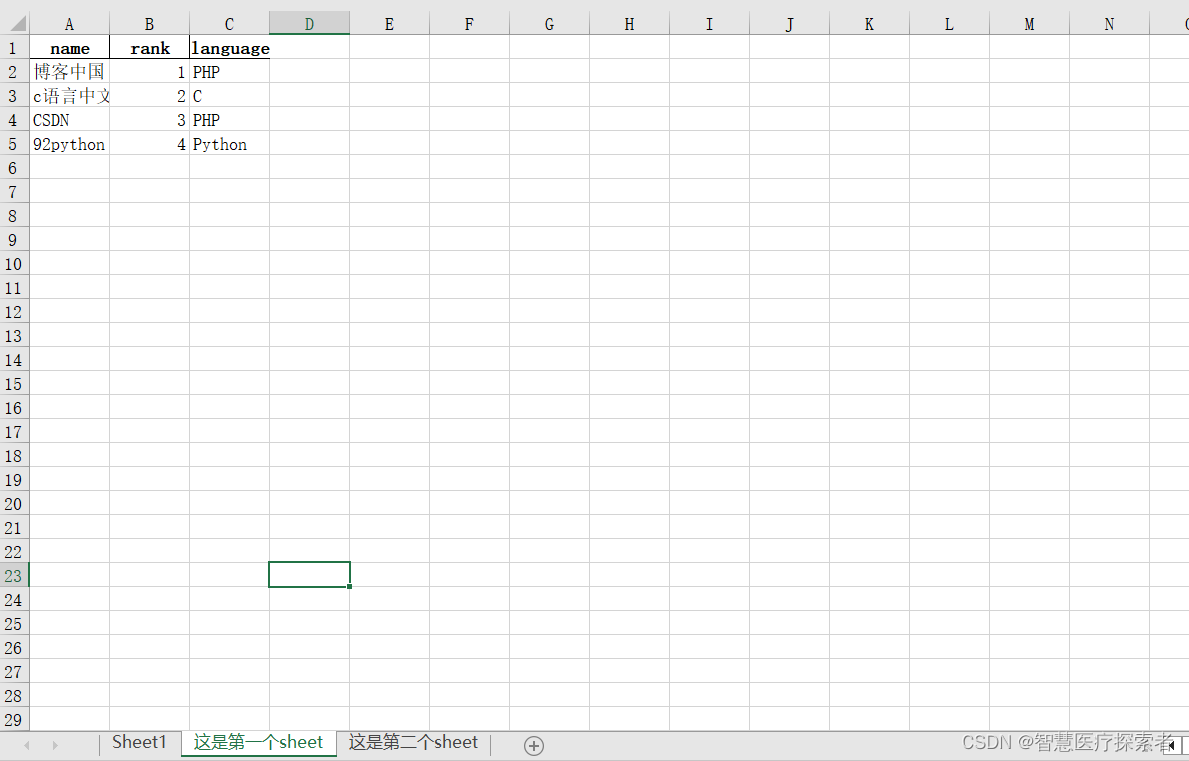
3.9.3 追加sheet表内容
import pandas as pd
to_excle_file_path = 'test_excel2.xlsx'
# 创建DataFrame数据 字典嵌套数组类型
info_website = pd.DataFrame({'name': ['博客中国', 'c语言中文网', 'CSDN', '92python'],
'rank': [1, 2, 3, 4],
'language': ['PHP', 'C', 'PHP', 'Python']})
print(f'#DataFrame数据\n{info_website}')
# 数组嵌套字典类型
data = [{'a': 1, 'b': 2, 'c': 3},
{'a': 5, 'b': 10, 'c': 20},
{'a': "王者", 'b': '黄金', 'c': '白银'}]
df = pd.DataFrame(data)
print(f'#DataFrame数据\n{df}')
writer = pd.ExcelWriter(to_excle_file_path, mode='a', engine='openpyxl')
df.to_excel(writer, sheet_name="追加第一个sheet", index=False)
info_website.to_excel(writer, sheet_name="追加第二个sheet", index=False)
info_website.to_excel(writer, sheet_name="追加第三个sheet", index=False)
writer.close()运行结果显示如下:
#DataFrame数据
name rank language
0 博客中国 1 PHP
1 c语言中文网 2 C
2 CSDN 3 PHP
3 92python 4 Python
#DataFrame数据
a b c
0 1 2 3
1 5 10 20
2 王者 黄金 白银Excel内容写入后如下:
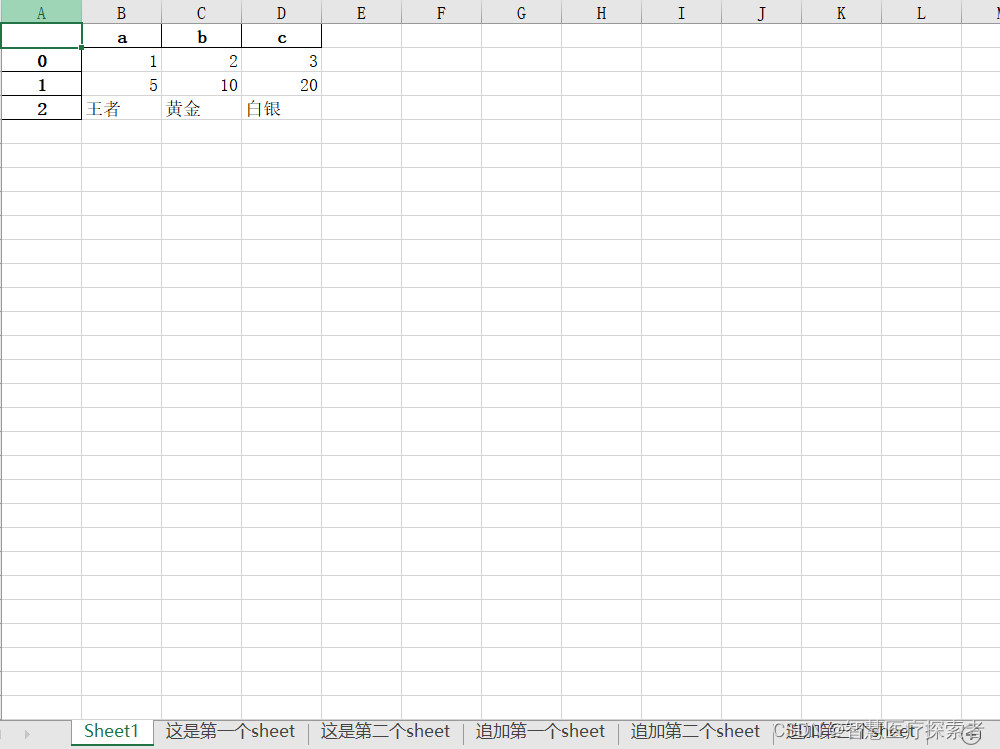
3.9.4 read_excel()读取数据
可以使用 read_excel() 方法读取 Excel 表格中的数据,其语法格式如下:
pandas.read_excel(io, sheet_name=0, header=0, names=None, index_col=None,
usecols=None, squeeze=False,dtype=None, engine=None,
converters=None, true_values=None, false_values=None,
skiprows=None, nrows=None, na_values=None, parse_dates=False,
date_parser=None, thousands=None, comment=None, skipfooter=0,
convert_float=True, **kwds)常用参数如下:
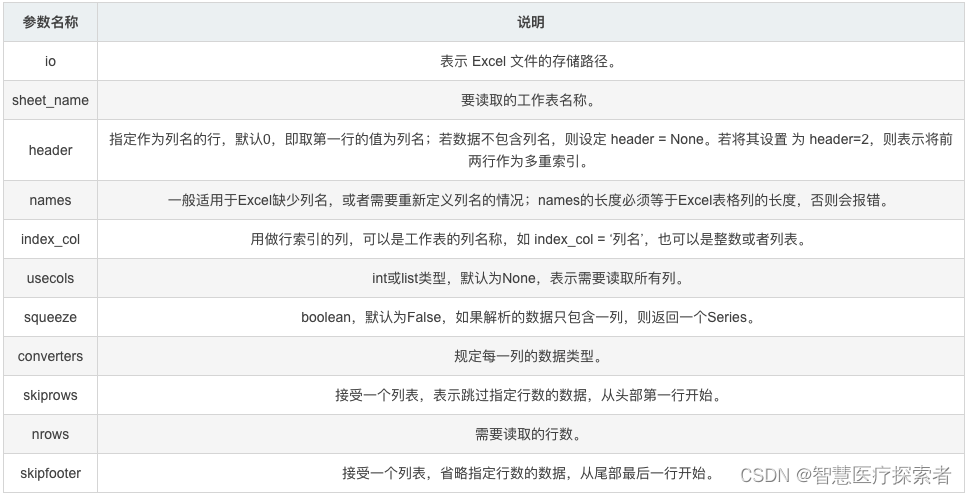
处理未命名的列以及重新定义索引
import pandas as pd
#读取excel数据
file_path = 'test_excel.xlsx'
df = pd.read_excel(file_path, engine='openpyxl')
print(f'#原始数据\n{df}')
# 选择name列做为索引,并跳过前两行
df = pd.read_excel(file_path, index_col='name', skiprows=[2], engine='openpyxl')
print(f'#选择name列做为索引,并跳过前两行\n{df}')
# 处理未命名列
df.columns = df.columns.str.replace('Unnamed.*', 'col_label')
print(f'#修改为未命名的列\n{df}')运行结果显示如下:
#原始数据
Unnamed: 0 name rank language
0 0 博客中国 1 PHP
1 1 c语言中文网 2 C
2 2 CSDN 3 PHP
3 3 92python 4 Python
#选择name列做为索引,并跳过前两行
Unnamed: 0 rank language
name
博客中国 0 1 PHP
CSDN 2 3 PHP
92python 3 4 Python
#修改为未命名的列
Unnamed: 0 rank language
name
博客中国 0 1 PHP
CSDN 2 3 PHP
92python 3 4 Python
index_col前多列作为索引列,usecols设置读取的数据列
import pandas as pd
# 读取excel数据
file_path = 'test_excel.xlsx'
df = pd.read_excel(file_path, engine='openpyxl')
print(f'#原始数据\n{df}')
# index_col选择前两列作为索引列 选择前三列数据,name列作为行索引
df = pd.read_excel(file_path, index_col=[0, 1], usecols=[0, 1, 2],engine='openpyxl')
print(f'#ndex_col选择前两列作为索引列 选择前三列数据,name列作为行索引\n{df}')运行结果显示如下:
#原始数据
Unnamed: 0 name rank language
0 0 博客中国 1 PHP
1 1 c语言中文网 2 C
2 2 CSDN 3 PHP
3 3 92python 4 Python
#ndex_col选择前两列作为索引列 选择前三列数据,name列作为行索引
name rank
0 博客中国 1
1 c语言中文网 2
2 CSDN 3
3 92python 43.10 pandas支持的文件格式
Pandas几乎支持市面上所有的主流数据存储形式,如Excel和CSV到JSON及各种数据库。
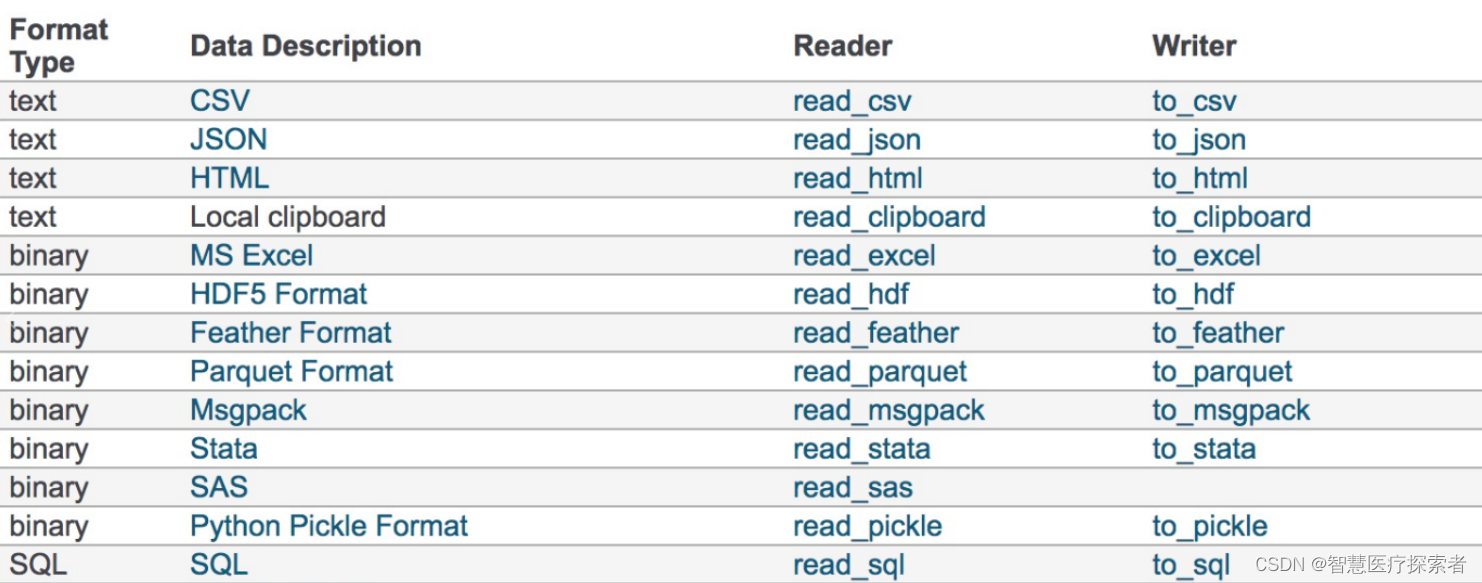
Pandas 提供了许多函数来加载数据,主要有以下几个函数:
read_csv():从 CSV 文件加载数据read_excel():从 Excel 文件加载数据read_sql():从 SQL 数据库加载数据read_json():从 JSON 文件加载数据read_html():从 HTML 文件加载数据
Pandas 提供了多种函数来将数据保存到不同的文件格式中,主要有以下几个函数:
to_csv():将数据保存到 CSV 文件中to_excel():将数据保存到 Excel 文件中to_sql():将数据保存到 SQL 数据库中to_json():将数据保存到 JSON 文件中to_html():将数据保存到 HTML 文件中







